How To Check System Memory In Windows 10
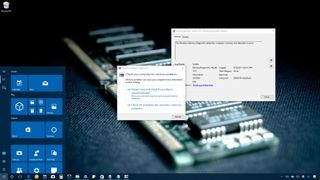
On Windows 10, if applications keep crashing or they're running very slowly, or you lot're experiencing weird things, such every bit random reboots, freezes, or sudden Blue Screens of Death (BSOD), it could be hard to pinpoint the root of the problem because it could be a software or hardware-related effect.
Even so, usually, the memory is the first thing y'all want to check. This is because if information technology's a trouble with one of the modules, you lot'll need to take care of the consequence apace, as information technology cannot just crusade your computer to misbehave, but a bad memory module can also corrupt files, which is not a skillful affair.
While in that location are a number of tools you can download off the net, Windows 10 includes its own Windows Retentiveness Diagnostic tool to check if your computer has retentivity issues.
In this Windows ten guide, we walk you through the steps to utilise the Windows Retention Diagnostic tool to find out if you have a faulty retentiveness stick.
How to diagnose retentivity problems on Windows 10
Using these steps requires you to restart your computer, and then brand sure to relieve any files y'all may have open and close any running applications before proceeding. Here goes:
- Open Control Panel.
- Click on System and Security.
- Click on Administrative Tools.
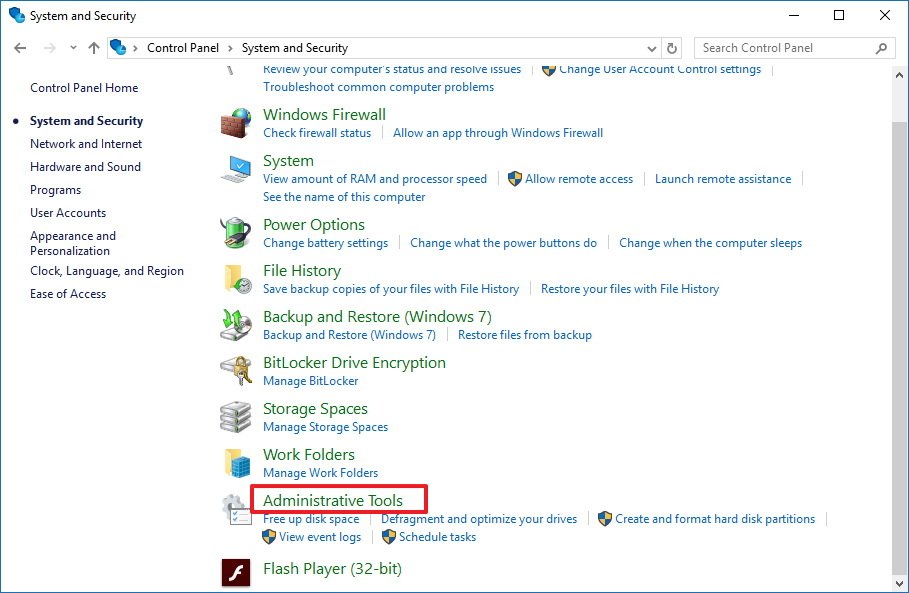
- Double-click the Windows Retention Diagnostic shortcut.
- Quick tip: Alternatively, you can also use the Windows key + R keyboard shortcut, type mdsched.exe, and click OK to launch the tool.
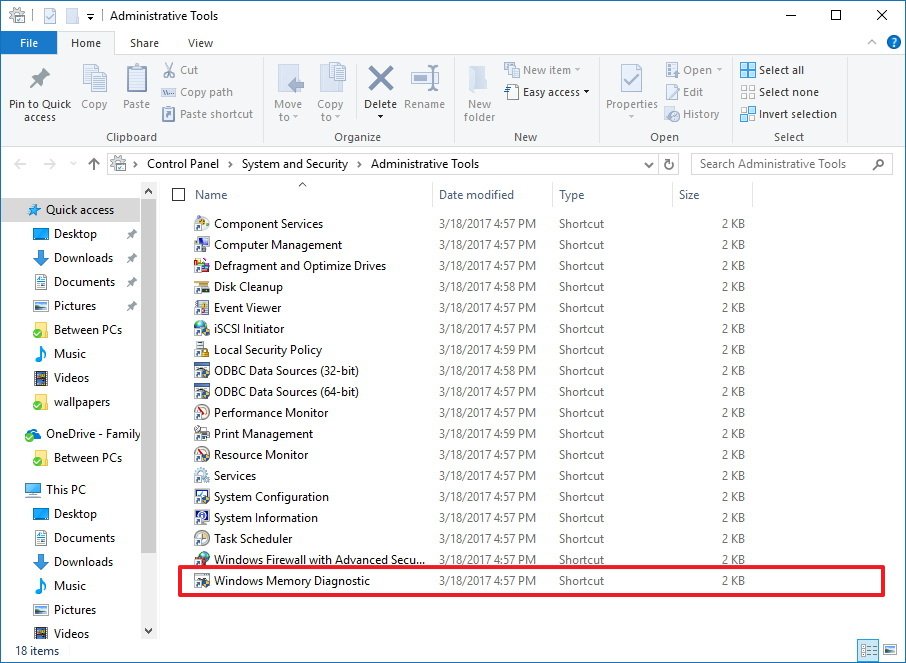
- Click the Restart now and check problems selection. (The tool too offers an option to schedule a test in the next reboot, if you tin can't beget to close your applications and restart immediately.)
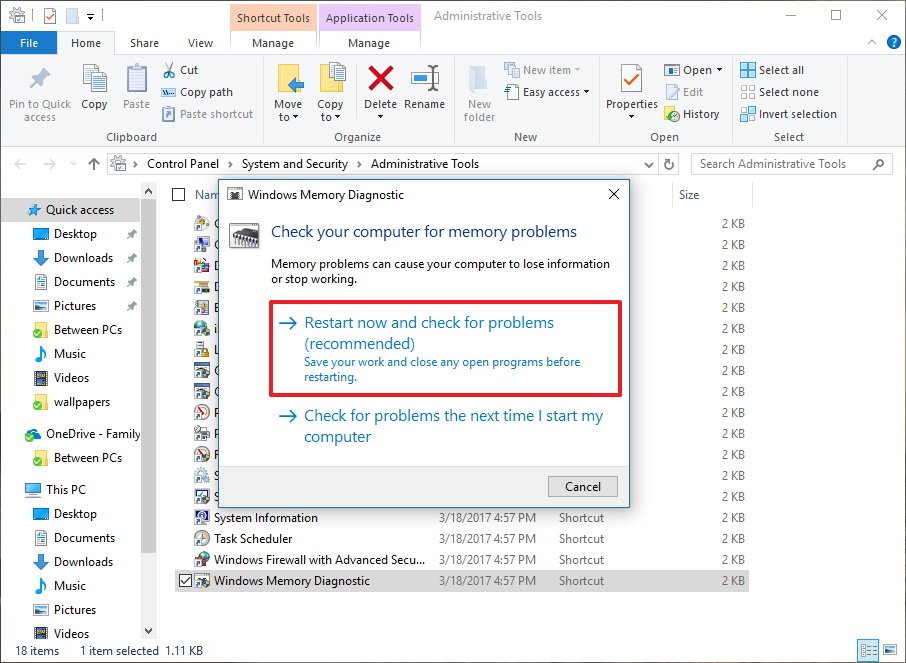
Once your estimator reboots, information technology volition start in the Windows Retentivity Diagnostics environment, and the tests will kick in the Standard fashion right abroad. In this mode, the tool will run all the scans available in the Basic mode, in addition to LRAND, Stride6 (cache enabled), CHCKR3, WMATS+, and WINVC tests.

You tin simply let the Standard mode test your reckoner's memory, or you can also press the F1 primal at any fourth dimension to open up the Windows Memory Diagnostic folio to modify the scan options.
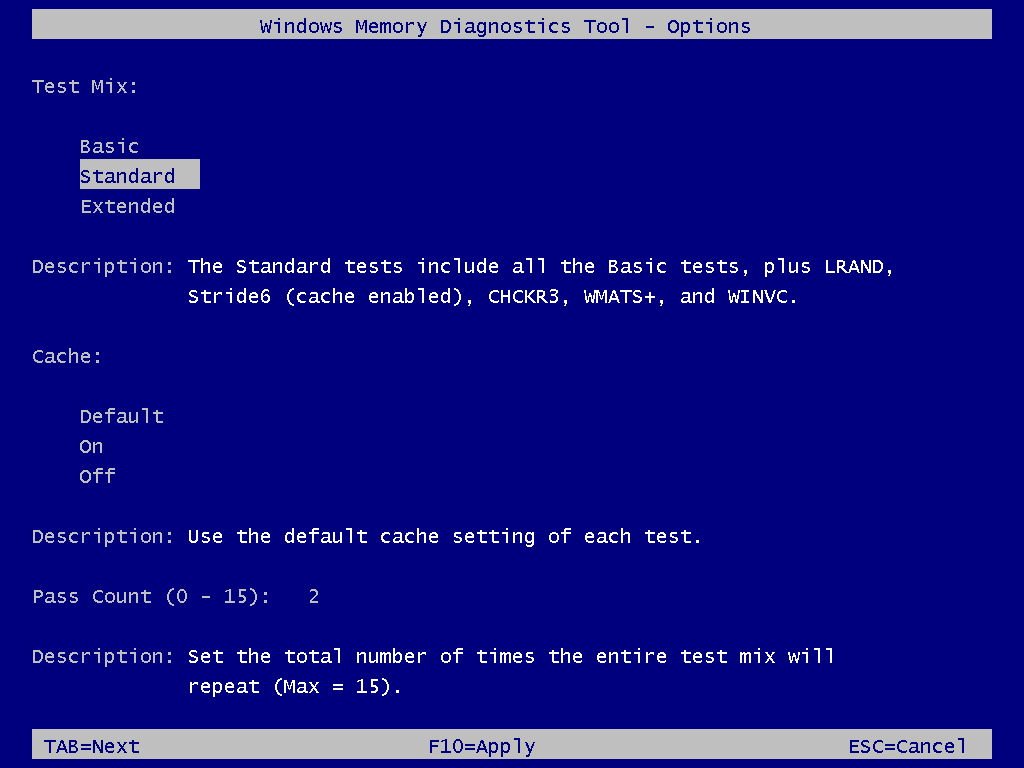
On the options folio, you can change the browse mode to Basic, which runs the MATS+, INVC, and SCHCKR (cache enabled) tests.

Or you can also select the Extended way, which includes every test bachelor using Standard manner, plus MATS+ (cache disabled), Stride38, WSCHCKR, WStride-half dozen, CHCKR4, WCHCKR3, ERAND, Stride6 (enshroud disabled), and CHCKR8.

If necessary, you can navigate the different options using the TAB key to change enshroud settings. If yous disable the cache, it'll allow the tool to access the information in RAM directly, which ensures a consummate test. In addition, you lot tin can likewise set up a number of times the scan will be repeated to test your system's retentivity modules.
Afterward you're done selecting your options, just press the F10 central to go back to the main page, and the browse will restart automatically.
Checking test results
While you can meet the status during the browse process, every bit shortly as the test completes your computer will restart automatically, and y'all'll demand to utilise the Event Viewer to see the test results to find out if y'all have a bad RAM module.
- Open Start.
- Search for eventvwr.exe and press Enter to open Event Viewer.
- Aggrandize the Windows Logs binder.
- Right-click Arrangement, and click on Find.

- Type MemoryDiagnostics-Results, and click the Observe Next push.
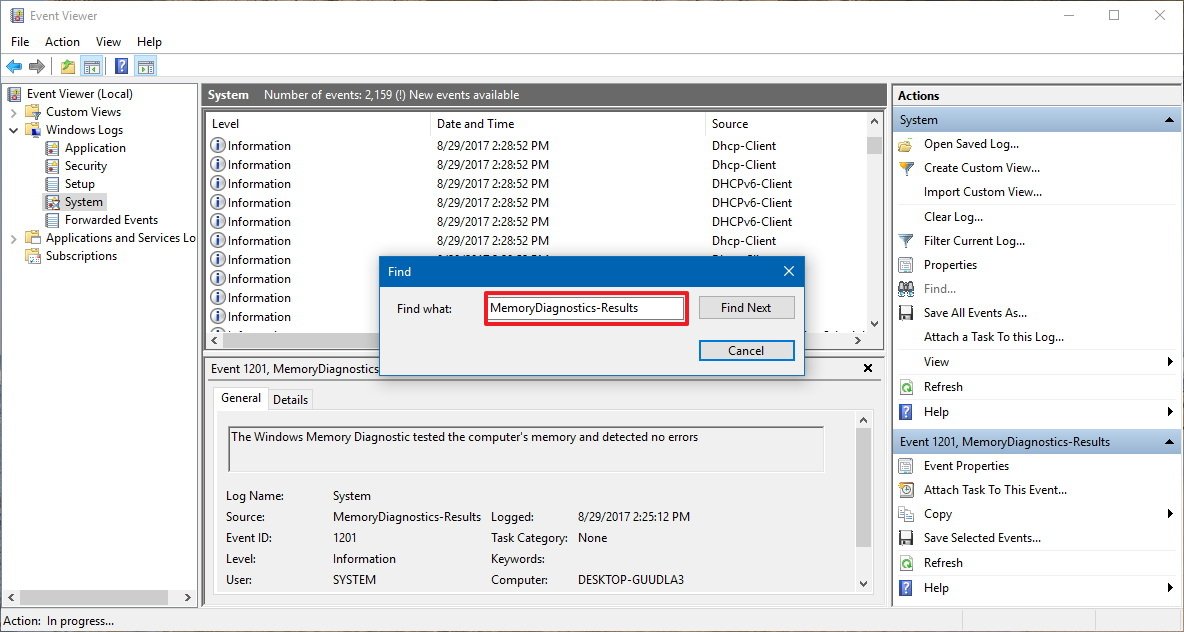
- Close the Find dialog.
- On Event Viewer, double-click the MemoryDiagnostics-Results source, and see the message. If the effect reads "The Windows Memory Diagnostic tested the computer's memory and detected no errors," so you can discard memory as the root of the trouble.

If the result shows one or more errors, y'all can effort running an extended memory test, and recheck the results. If you continue to see at to the lowest degree one error, 1 of the RAM modules probably has problems, and information technology may need to exist replaced.
Sometimes, when the test fails, the tool volition be able to bespeak which module has the problem with the results. However, if information technology's unable to provide that information, y'all may demand to remove and examination each retention module until yous notice out the i that is faulty.
Although we're focusing this guide on Windows x, the Windows Retention Diagnostic tool has been available for years, which means that you can also use it on previous versions, including Windows viii.i and Windows 7.
More than Windows 10 resources
For more helpful articles, coverage, and answers to common questions about Windows 10, visit the following resource:
- Windows 10 on Windows Primal – All you need to know
- Windows x assist, tips, and tricks
- Windows 10 forums on Windows Key
Mauro Huculak is technical writer for WindowsCentral.com. His main focus is to write comprehensive how-tos to help users go the well-nigh out of Windows x and its many related technologies. He has an Information technology background with professional certifications from Microsoft, Cisco, and CompTIA, and he'due south a recognized member of the Microsoft MVP community.
Source: https://www.windowscentral.com/how-check-your-pc-memory-problems-windows-10
Posted by: reedindraviverry.blogspot.com

0 Response to "How To Check System Memory In Windows 10"
Post a Comment